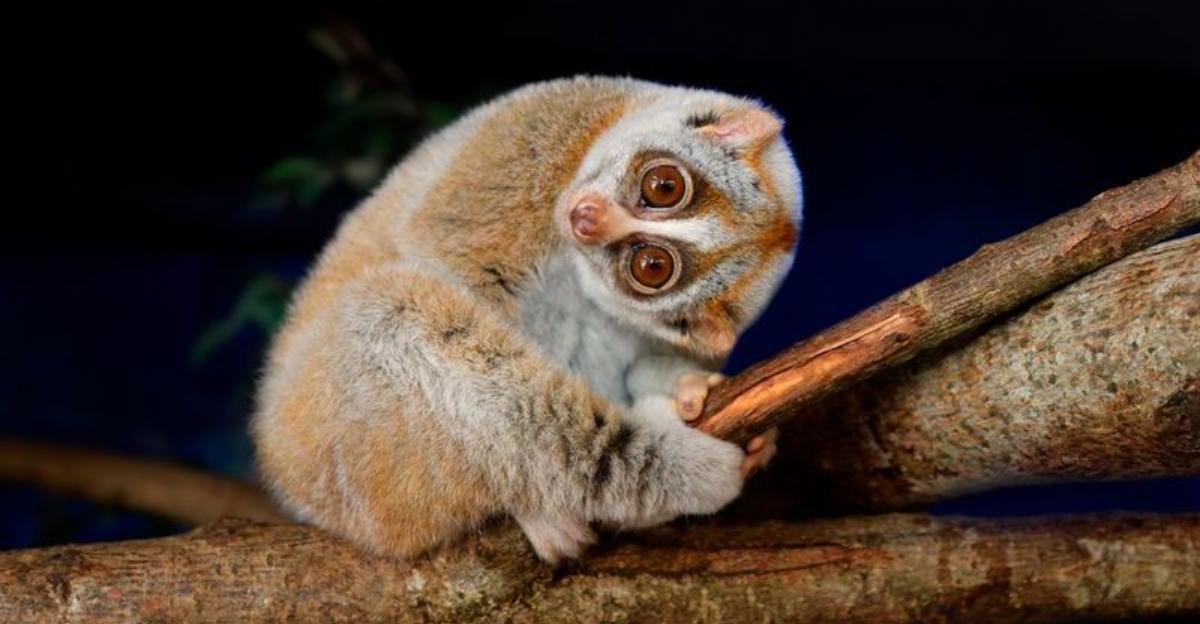Exploring the astonishing world of wildlife often leads us to discover animals that are not only rare but also elusive in nature.
The thrill of potentially spotting one of these creatures is a dream for many wildlife enthusiasts and travelers.
This article delves into such rare and exotic animals that are incredibly difficult to encounter in the wild, offering insights into their habitats, behaviors, and the conservation efforts surrounding them.
Each animal holds a unique place in the ecosystem, and their rarity adds to their mystique, making them subjects of fascination and admiration. Join us as we journey through diverse landscapes to uncover these hidden gems of the animal kingdom.
1. Amur Leopard
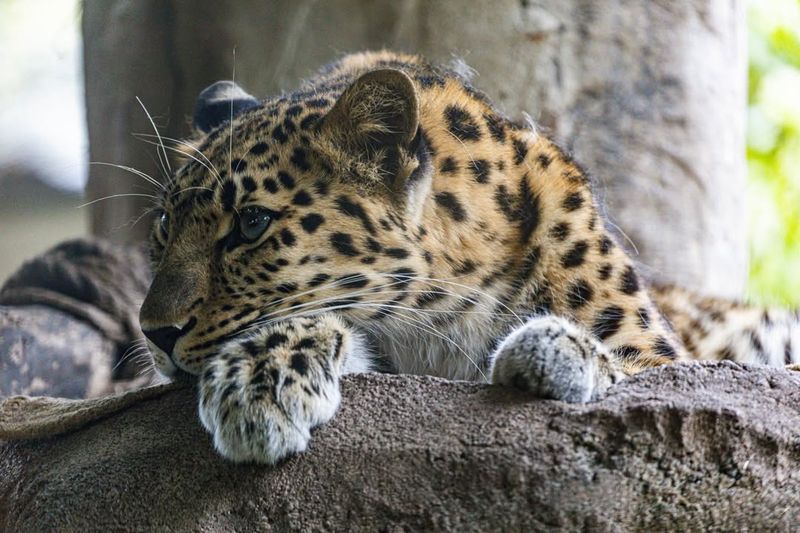
In the chilly expanses of eastern Russia, an elusive predator roams the snow-laden forests, casting a shadow of mystery and majesty.
The Amur Leopard, with its striking golden-orange coat adorned with rosettes, is a sight many wildlife enthusiasts only dream of.
Due to habitat loss and poaching, their numbers have dwindled, making sightings rare. Efforts to protect these majestic cats have intensified, with conservationists working tirelessly to ensure their survival. In recent years, there has been a slight uptick in their population, yet they remain critically endangered.
For those fortunate enough to catch a glimpse of this elusive feline, it’s a moment etched in memory forever.
The dense forests and harsh climate play a role in their secrecy, but the allure of such an encounter draws nature lovers from around the globe. Beyond the thrill, witnessing an Amur Leopard is a reminder of the delicate balance in nature that we must strive to protect.
2. Saola
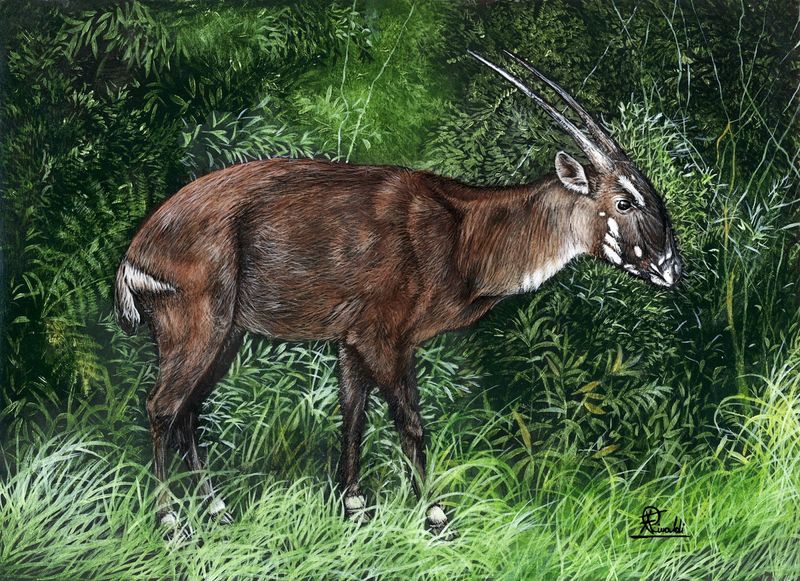
Amidst the misty mountainous regions of Vietnam and Laos, the Saola quietly traverses the dense forests. Known as the ‘Asian unicorn,’ this elusive creature is shrouded in mystery.
Its discovery in 1992 was hailed as a monumental event, as such large mammals are rarely found. With long, straight horns and distinctive facial markings, the Saola is a remarkable sight. However, due to deforestation and hunting, their numbers are critically low.
Conservation efforts are underway, but spotting one in the wild remains a rare privilege. The Saola’s preference for secluded habitats makes them even harder to find.
Despite their reclusive nature, they have captured the imagination of wildlife enthusiasts worldwide. A symbol of the unknown, the Saola reminds us of the many mysteries yet to be uncovered in nature. Protecting their habitat is essential, as it ensures the survival of this extraordinary creature. In the quest to spot them, patience and luck are paramount.
3. Gobi Bear
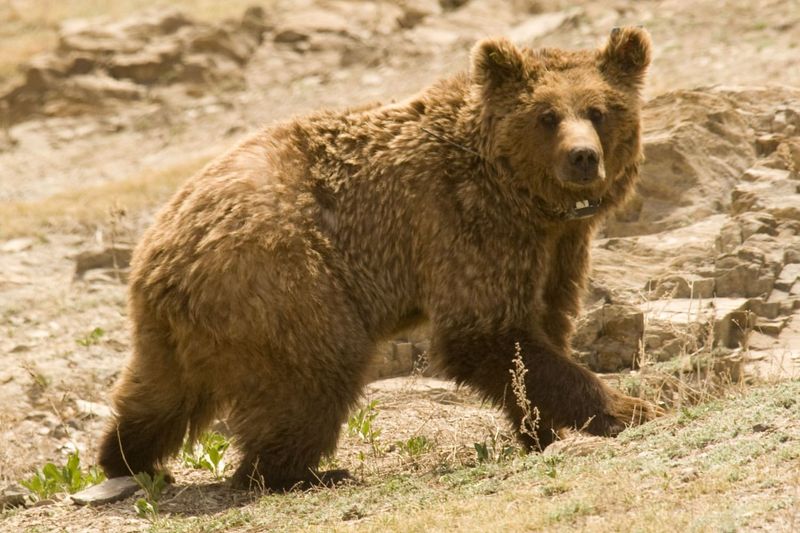
In the arid expanses of the Gobi Desert, a bear unlike any other ekes out a living amidst the harsh environment. The Gobi Bear, one of the rarest bears globally, faces a constant struggle for survival. With its sandy fur blending seamlessly into the desert landscape, it epitomizes the spirit of resilience.
Historically, the Gobi Bear’s numbers have been alarmingly low, primarily due to habitat degradation and food scarcity. Conservationists have taken significant steps to monitor and protect these unique bears, though their elusive nature makes direct observation challenging.
The harsh desert climate and vast, rugged terrain are both allies and adversaries to the Gobi Bear. While the environment offers some protection from human intrusion, it also poses immense challenges.
For those few who venture into the desert hoping to glimpse this rare bear, it’s a journey of determination and respect for nature’s endurance. The Gobi Bear stands as a testament to survival against the odds.
4. Vaquita
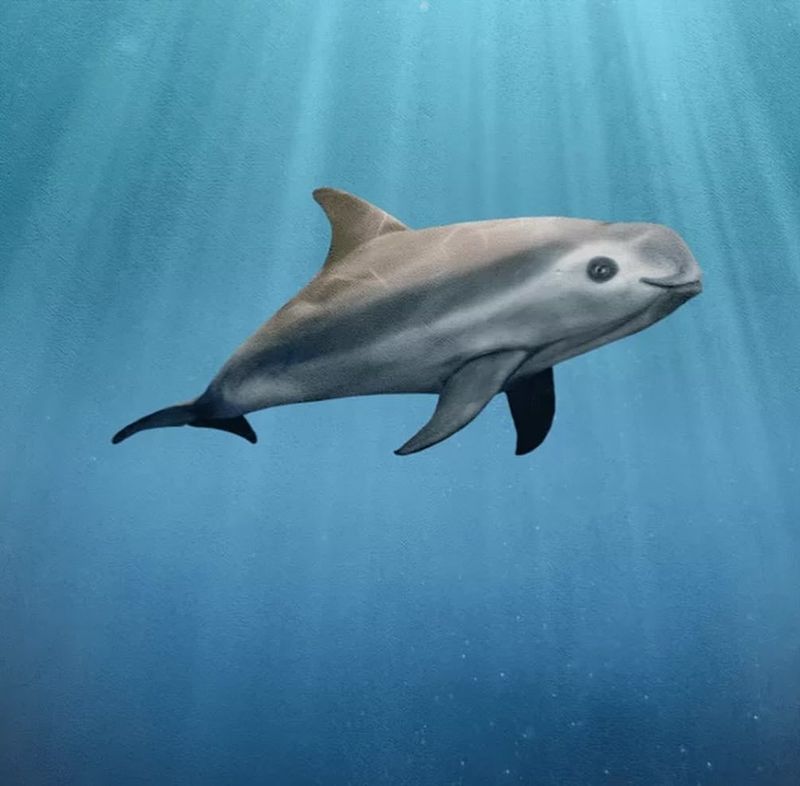
In the crystal-clear waters of the Gulf of California, a small porpoise silently glides, its presence almost ghostly. The Vaquita, the world’s most endangered marine mammal, faces imminent extinction if urgent actions aren’t taken.
Characterized by its petite size and dark eye rings, the Vaquita’s beauty belies its precarious existence. Illegal fishing practices, particularly gillnets, have decimated their numbers, leaving conservationists in a race against time.
Efforts to ban harmful fishing methods are crucial for its survival. Capturing the essence of the Vaquita on camera is a feat few achieve, as their elusive nature and dwindling population make sightings exceedingly rare.
In the quest to preserve their habitat, both local communities and international organizations play crucial roles. The Vaquita’s plight serves as a stark reminder of the impact of human actions on marine ecosystems.
5. Philippine Eagle
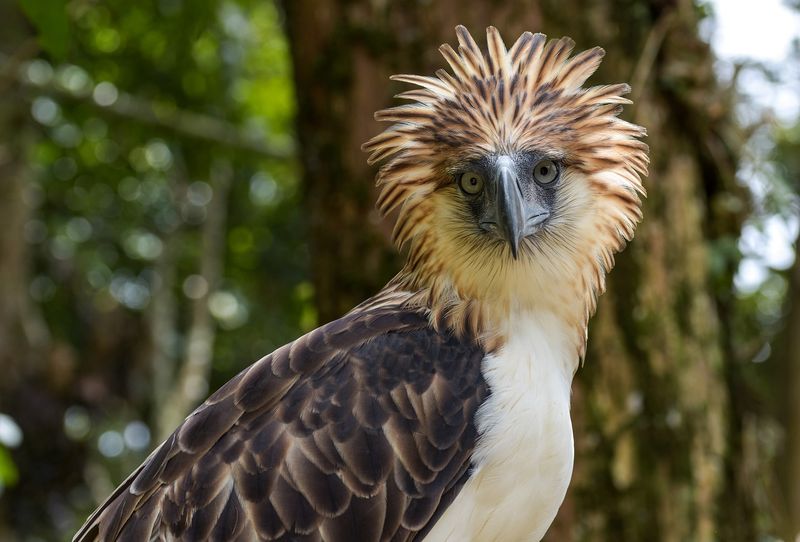
High above the dense forests of the Philippines, a predator of unrivaled majesty soars, embodying grace and power. The Philippine Eagle, with its imposing stature and distinctive crest, is the largest living eagle in terms of wing length.
Despite its formidable presence, it is critically endangered, with deforestation posing the greatest threat to its survival. Conservationists have implemented breeding programs and habitat protection initiatives to prevent its extinction.
Observing this eagle in its natural habitat is a privilege reserved for the fortunate few, as their numbers remain alarmingly low. The Philippine Eagle’s role as a top predator is vital in maintaining the balance of its ecosystem, highlighting the importance of continued conservation efforts.
For bird watchers and nature lovers, spotting this eagle is a bucket-list experience, imbued with a sense of awe and responsibility. Beyond its beauty, the Philippine Eagle symbolizes the urgent need to protect endangered species and their habitats.
6. Javan Rhino
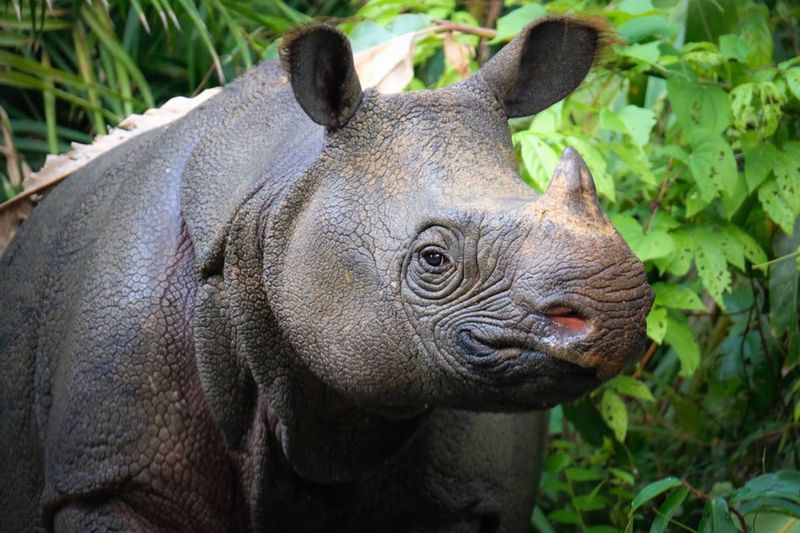
In the lush, swampy landscapes of Ujung Kulon National Park, Indonesia, a prehistoric giant makes its quiet presence known.
The Javan Rhino, with its single horn and thick, folded skin, seems like a relic from another era. Critically endangered, fewer than 80 individuals are believed to remain in the wild. Habitat destruction and poaching have driven this magnificent creature to the brink of extinction.
Conservation measures focus on protecting their remaining habitats and preventing illegal poaching activities. Spotting a Javan Rhino is a rare experience, often requiring patience and a touch of luck.
Within their secluded natural habitat, these rhinos maintain a low profile, making them elusive subjects for photographers and wildlife enthusiasts alike. The Javan Rhino’s survival is a testament to resilience, yet underscores the urgent need for conservation.
Their continued existence depends on global efforts to safeguard their habitat and curb poaching activities. A sighting is not just an encounter but a call to action.
7. Iberian Lynx
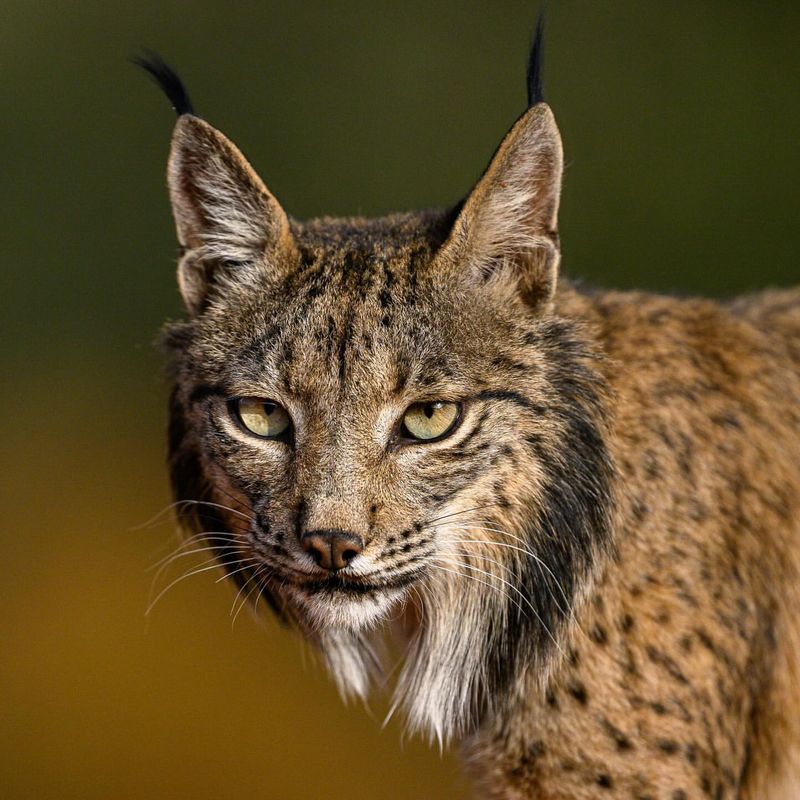
In the picturesque Mediterranean forests of Spain, a feline predator stalks its prey with precision and grace. The Iberian Lynx, known for its tufted ears and uniquely spotted coat, is a master of stealth.
Once on the brink of extinction, dedicated conservation efforts have seen a resurgence in their population, though they remain endangered. Human encroachment and dwindling prey pose ongoing threats.
Conservationists have focused on habitat restoration and increasing prey availability, vital for the lynx’s survival. Spotting one in the wild is a rare privilege, often a highlight for those passionate about wildlife.
The Iberian Lynx’s striking appearance and elusive nature captivate both photographers and naturalists. Their role in controlling rabbit populations underscores their importance in the ecosystem.
Observing an Iberian Lynx in its natural habitat offers an insight into the delicate balance of nature. It’s a reminder of the positive impact of dedicated conservation efforts and the ongoing need for vigilance.
8. Kakapo
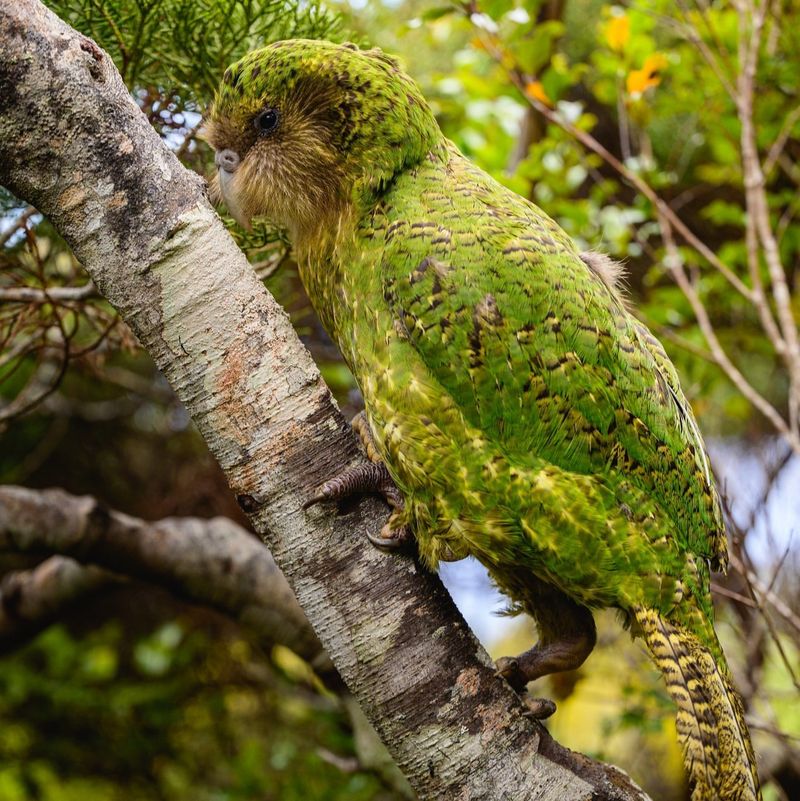
In the nocturnal realm of New Zealand’s forests, a peculiar bird makes its presence known under the cover of darkness. The Kakapo, a flightless parrot with a striking green plumage and an owl-like face, is one of nature’s oddities.
Once abundant, its numbers have plummeted due to introduced predators and habitat loss. Intensive conservation efforts have been implemented to protect the remaining population, which is critically endangered.
The Kakapo’s unique behaviors and inability to fly make it a fascinating subject for researchers. Observing a Kakapo requires patience and respect for its fragile existence. Its ground-dwelling lifestyle and nocturnal habits add to its elusive nature, attracting bird enthusiasts from around the world.
The Kakapo’s plight highlights the impact of human actions on biodiversity and the importance of concerted conservation efforts. For those lucky enough to encounter this rare bird, it’s a moment of connection with nature’s resilience and vulnerability.
9. Yangtze Finless Porpoise
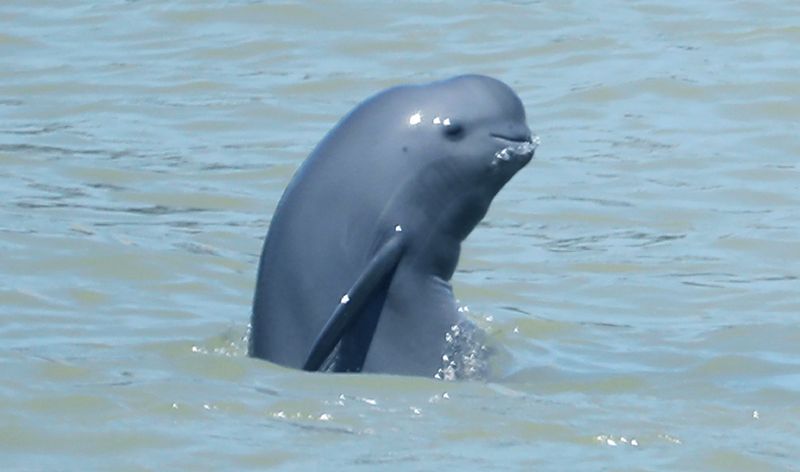
Beneath the waters of China’s Yangtze River, a playful porpoise navigates its murky depths. The Yangtze Finless Porpoise, with its endearing smile and sleek, finless body, is a symbol of the river’s fragile ecosystem.
Critically endangered, its numbers have declined due to pollution, overfishing, and habitat loss. Conservation efforts are underway to improve water quality and establish protected areas to aid in its survival.
Encountering this charismatic creature in the wild is uncommon, adding to its allure. The porpoise’s playful nature and distinctive appearance make it a favorite among wildlife watchers.
Its presence in the Yangtze River is a reminder of the interconnectedness of ecosystems and the need for sustainable environmental practices.
Observing a Yangtze Finless Porpoise offers a glimpse into the delicate balance of life within the river. Its survival hinges on collective actions to protect and restore its natural habitat, ensuring future generations can marvel at its charm.
10. Sunda Slow Loris
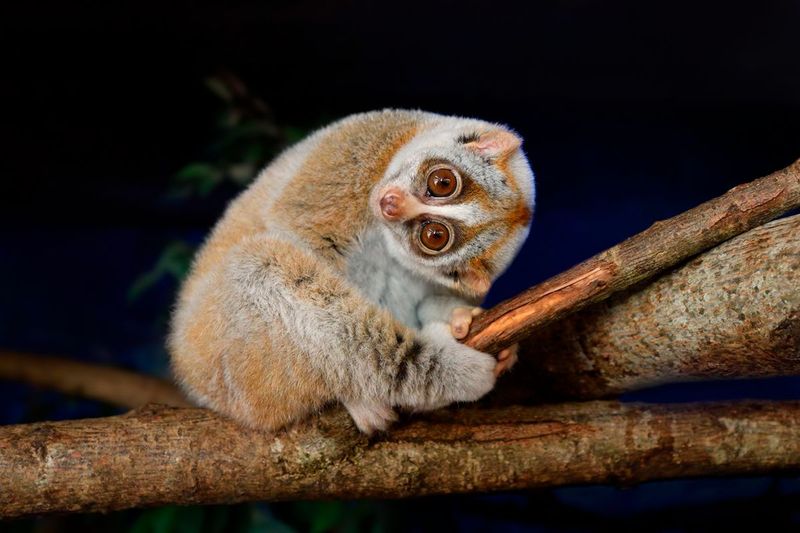
In the dense forests of Southeast Asia, a creature with wide, expressive eyes peers cautiously from the treetops. The Sunda Slow Loris, a nocturnal primate, moves with deliberate grace through its arboreal home.
Its popularity in the illegal pet trade and habitat destruction have severely threatened its existence. Conservationists are working to curb illegal trafficking and protect its natural habitat. Spotting a Sunda Slow Loris in the wild is a rare opportunity, requiring keen observation and respect for its nocturnal lifestyle.
Its large eyes, adapted for night vision, give it a distinct appearance that captivates wildlife enthusiasts. The Sunda Slow Loris serves as a reminder of the fragility of tropical ecosystems and the impact of human activities on biodiversity.
Observing this unique primate in its natural environment offers insights into its secretive world and emphasizes the importance of conservation efforts. Protecting its habitat ensures the Sunda Slow Loris continues to enchant future generations.
11. Okapi
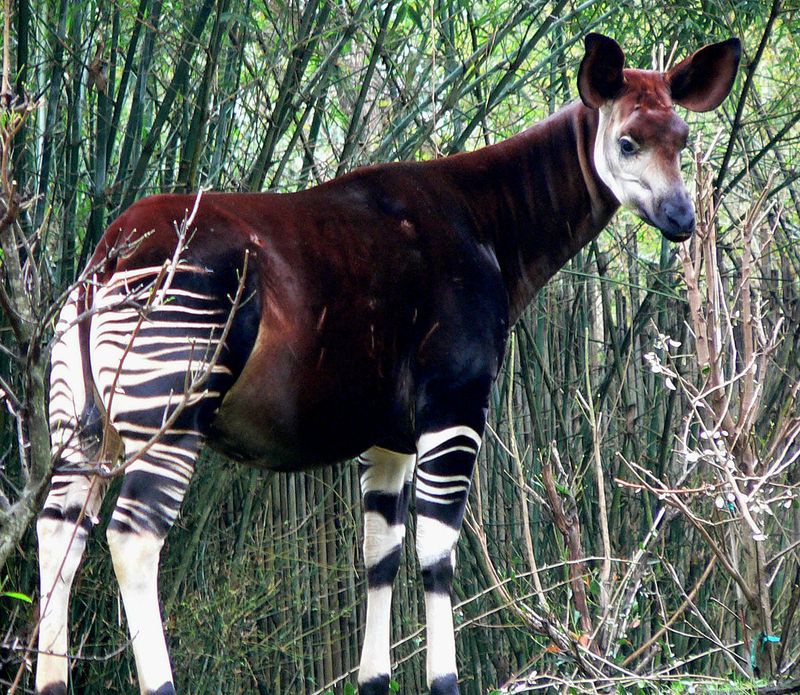
Deep within the lush Ituri Forest of the Democratic Republic of the Congo, a creature of striking appearance quietly grazes. The Okapi, with its zebra-like legs and giraffe-like neck, is a living testament to nature’s diversity.
Its reclusive nature and limited range make sightings uncommon. Deforestation and poaching have threatened its survival, prompting conservation efforts to protect its habitat and population. For those fortunate enough to witness an Okapi in its natural setting, it’s a moment of awe and reflection on the interconnectedness of ecosystems. The Okapi’s unique appearance and gentle demeanor make it a symbol of the Congo’s rich biodiversity. Observing an Okapi in the wild provides a rare insight into its secretive world, highlighting the importance of preserving their natural habitat. Its survival is a reminder of the delicate balance of nature and the need for continued conservation efforts. Protecting the Okapi ensures future generations can marvel at its unique beauty.
12. Pangolin
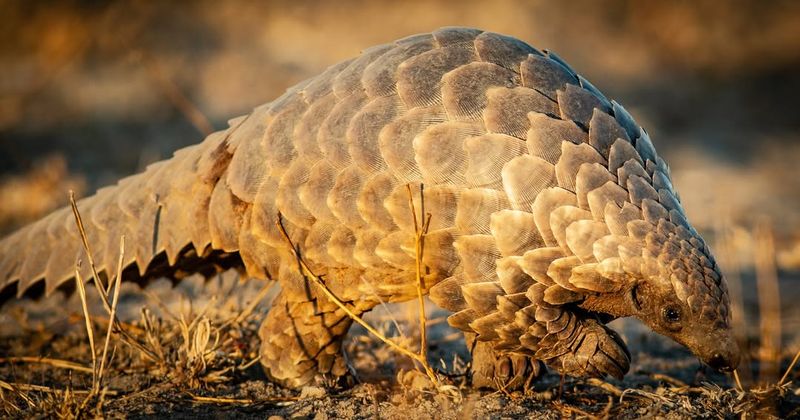
In the dimly lit forests of Africa and Asia, a creature resembling a walking pinecone shuffles through the underbrush. The Pangolin, covered in protective scales, is unique among mammals. Its secretive nature and the illegal wildlife trade have rendered it critically endangered.
Conservationists are dedicated to rescuing and rehabilitating these gentle creatures, raising awareness about their plight. Encountering a Pangolin in the wild is a rare experience, their nocturnal nature adding to the challenge of observation. Known for curling up into a ball when threatened, the Pangolin is a symbol of vulnerability and resilience.
Observing one in its natural habitat offers a glimpse into the hidden lives of the world’s only scaly mammal. The Pangolin’s plight underscores the urgent need for global efforts to combat the illegal wildlife trade and protect endangered species. For those privileged to witness a Pangolin, it is a moment of connection with a world we must strive to preserve.
13. Sumatran Tiger
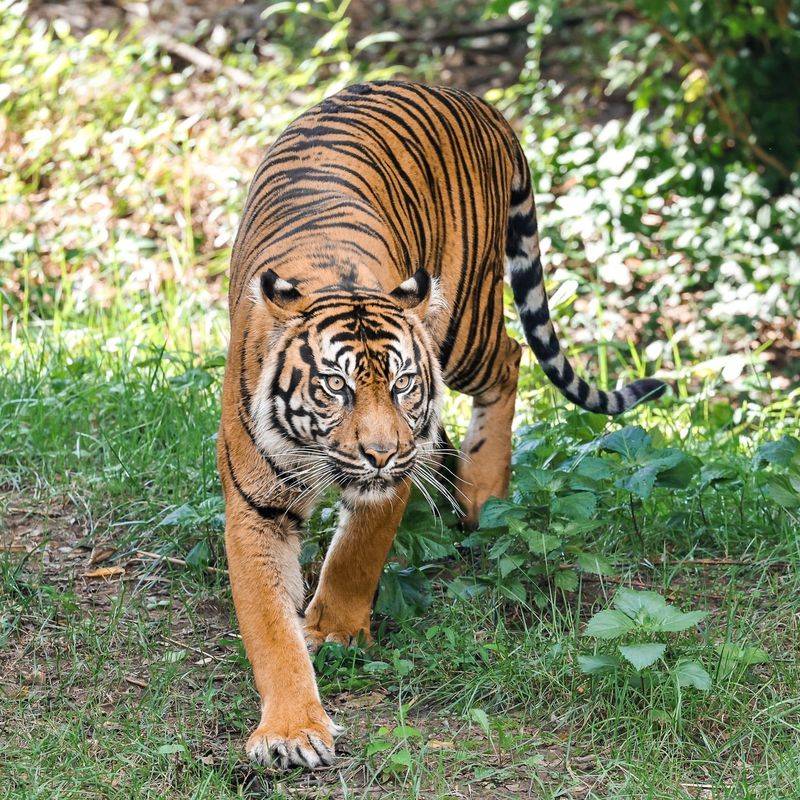
In the dense jungles of Sumatra, a powerful predator silently stalks its prey, a master of stealth and survival. The Sumatran Tiger, with its vibrant orange coat marked by black stripes, is a sight of unmatched beauty and grace.
Critically endangered, its population continues to be threatened by poaching and habitat loss. Conservation programs are focused on increasing their numbers through anti-poaching measures and habitat protection.
Spotting a Sumatran Tiger in the wild is a rare and exhilarating experience, reserved for the lucky few who venture into its jungle domain.
The tiger’s role as an apex predator is crucial for maintaining the ecological balance, highlighting the importance of ongoing conservation efforts.
Observers of this majestic creature often describe a sense of awe and responsibility to protect such incredible wildlife. The Sumatran Tiger’s existence is a testament to nature’s grandeur and the urgent need to preserve the rich biodiversity of our planet. Its survival depends on collective action and global awareness.
14. Aye-aye
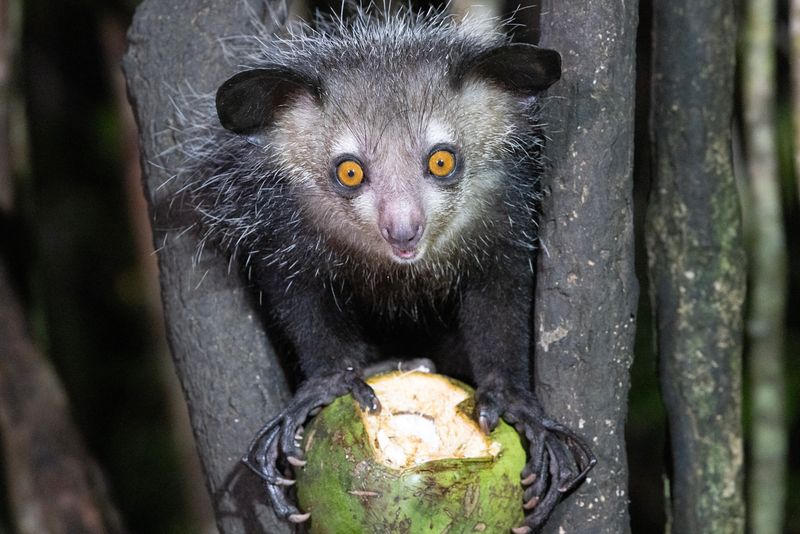
In the nocturnal forests of Madagascar, a curious primate explores its surroundings with oversized eyes and an elongated finger.
The Aye-aye, with its unique adaptations, is a fascinating subject for scientists and wildlife enthusiasts alike. Critically endangered, its numbers have dwindled due to habitat destruction and superstitions that have led to unnecessary killings.
Conservation efforts focus on protecting its natural habitat and educating local communities about its ecological importance. Spotting an Aye-aye in the wild is a rare treat, often requiring patience and respect for its nocturnal habits.
Its method of tapping on wood to find insects is a unique adaptation that showcases the wonders of evolution. Protecting the Aye-aye ensures the survival of one of nature’s most intriguing creatures, inspiring future generations to value the diversity of life on Earth.
15. Snow Leopard
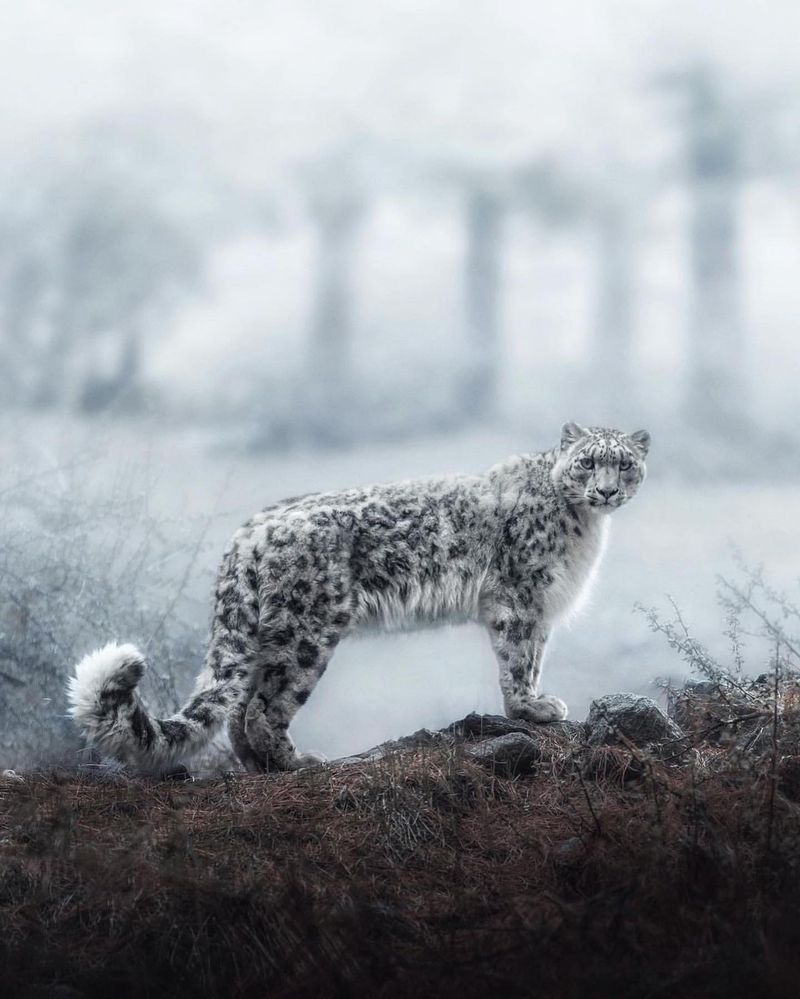
High in the remote regions of the Himalayas, a ghostly figure traverses the rugged terrain with grace and agility.
The Snow Leopard, with its thick, spotted fur and long, bushy tail, is an icon of the mountainous wilderness. Elusive by nature, its sightings are rare, drawing only the most determined wildlife enthusiasts. Habitat loss and poaching have placed this majestic cat in a precarious position, leading to intensified conservation efforts to protect its habitat and prey.
Observing a Snow Leopard in its natural environment is a breathtaking experience, offering a profound connection to the untouched beauty of the mountains. Its role as a top predator is crucial for maintaining the ecological balance of its habitat.
For those fortunate enough to encounter a Snow Leopard, it is a moment of awe and inspiration, underscoring the need for global conservation efforts. Protecting the Snow Leopard ensures the preservation of one of nature’s most enigmatic and beautiful creatures.
16. Fossa
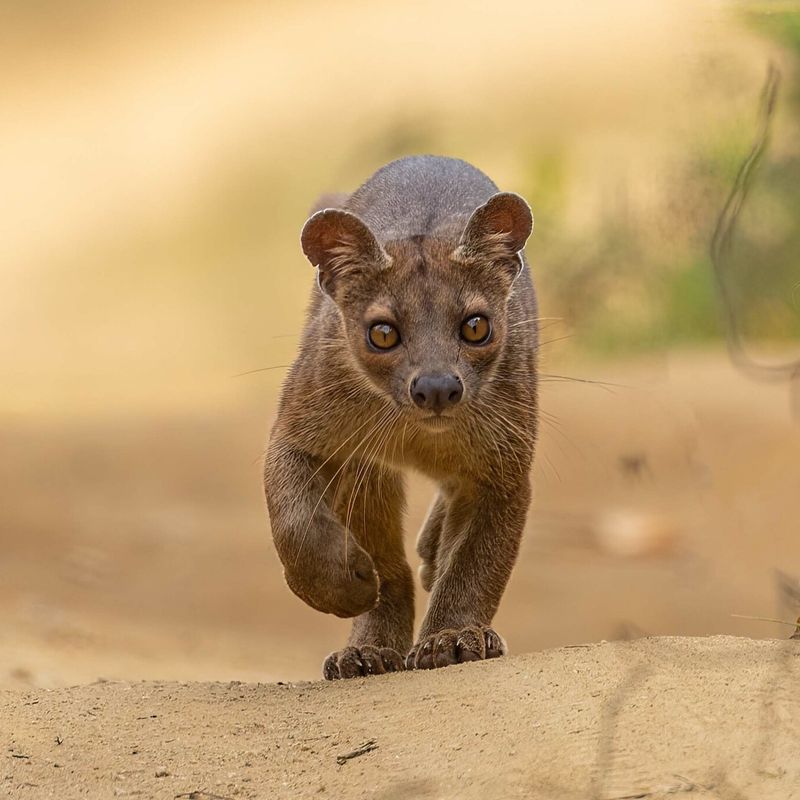
In the dense forests of Madagascar, a predator with cat-like grace prowls its territory, embodying agility and stealth.
The Fossa, unique to this island, is the largest carnivorous mammal of Madagascar, renowned for its hunting prowess. Its numbers have been declining due to habitat destruction and hunting, prompting conservation efforts to protect its natural environment.
Spotting a Fossa in the wild is a rare and thrilling experience, offering a glimpse into its secretive world. Its sleek body and agility make it a formidable hunter, drawing interest from wildlife enthusiasts and researchers.
Observing a Fossa in its natural habitat highlights the richness of Madagascar’s biodiversity and the importance of preserving its unique ecosystems.
Protecting the Fossa is vital for maintaining the balance of Madagascar’s wildlife, ensuring that future generations can marvel at this extraordinary predator. The Fossa’s presence in the forests serves as a reminder of the need for global conservation initiatives.
17. Borneo Bay Cat
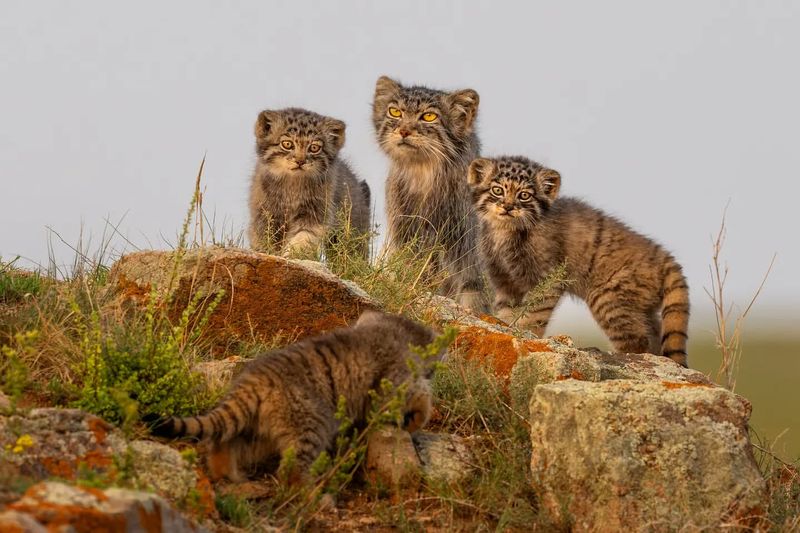
Deep within the rainforests of Borneo, a feline of rare beauty and mystery makes its way through the undergrowth.
The Borneo Bay Cat, with its striking reddish-brown coat, is one of the least known wild cats in the world. Its elusive nature and the dense forest habitat make sightings exceedingly rare. Habitat destruction and deforestation pose significant threats to its survival, prompting conservationists to focus on preserving its natural habitat.
Encountering a Borneo Bay Cat in the wild is an unparalleled experience for wildlife enthusiasts, offering a rare glimpse into the secretive life of this enigmatic creature. Its presence in Borneo’s rainforests underscores the rich biodiversity of the region and the urgent need for conservation efforts.
The Borneo Bay Cat serves as a symbol of the unknown wonders of nature, inspiring a deeper appreciation for the delicate balance of ecosystems. Protecting its habitat is crucial for ensuring the survival of this rare and beautiful feline.
18. Hirola
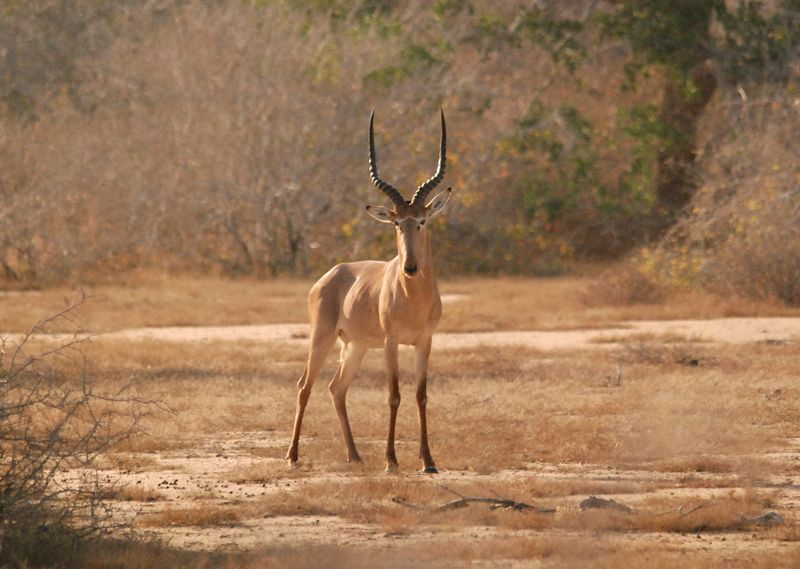
In the open grasslands of Kenya, an antelope of striking elegance and rarity grazes, its presence a testament to nature’s diversity.
The Hirola, with its distinctive lyre-shaped horns, is one of the world’s rarest antelopes. Habitat loss and poaching have driven its numbers to critically low levels, spurring conservation efforts to protect its environment and increase its population.
Spotting a Hirola in the wild is a rare and cherished experience, offering a glimpse into its unique world. Its graceful movements and alert demeanor captivate wildlife enthusiasts, highlighting the beauty of Kenya’s savannahs.
The Hirola’s survival is a reminder of the urgent need for conservation initiatives to preserve threatened species.
Observing a Hirola in its natural habitat underscores the importance of protecting biodiversity and the interconnectedness of ecosystems. For those fortunate enough to witness this rare antelope, it is a moment of connection with nature’s resilience and the ongoing efforts to safeguard the planet’s wildlife.

